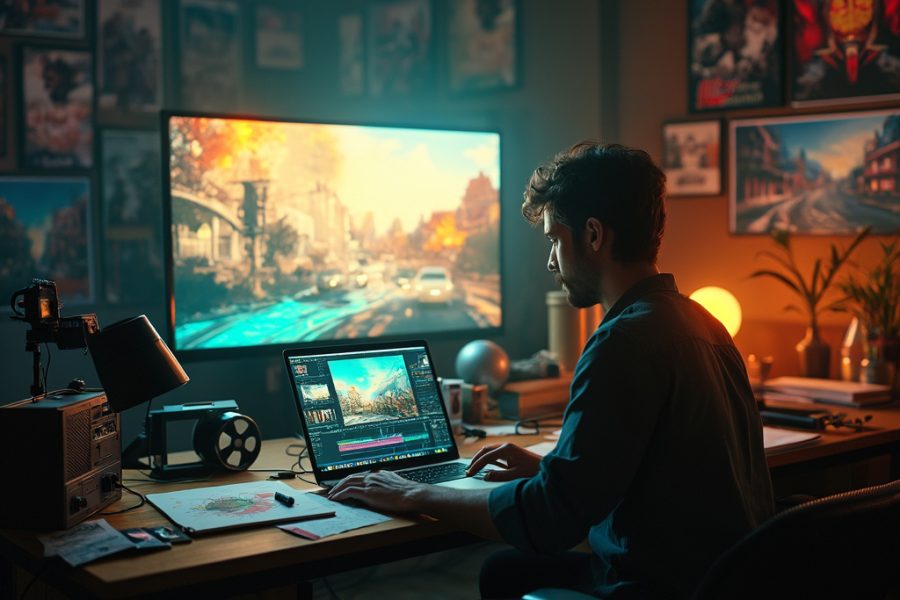A tribute to iconic performances
Throughout the history of cinema, Hollywood actors have delivered performances that resonate deeply with audiences, creating unforgettable moments on the silver screen. From the intense emotional depth of Marlon Brando in “The Godfather” to the charming wit of Audrey Hepburn in “Breakfast at Tiffany’s,” these movie icons have shaped the way we perceive storytelling in film. Their ability to embody complex characters and evoke genuine emotions is what sets them apart as some of the greatest actors in the industry.
These iconic performances often transcend the films themselves, becoming cultural touchstones that define generations. For instance, the powerful portrayal of Atticus Finch by Gregory Peck in “To Kill a Mockingbird” not only earned him an Academy Award but also established a moral compass for audiences. Such performances remind us of the profound impact that actors can have, not just on the film industry, but on society as a whole. To explore more about the best performances of the year, check out our Film Reviews: The Best Performances of the Year.
The impact of actors on cinema history
The influence of Hollywood actors extends far beyond their on-screen roles; they are pivotal in shaping the film industry itself. Their star power can drive box office success, influence trends, and even change the course of cinematic history. For example, the rise of action stars like Arnold Schwarzenegger and Sylvester Stallone in the 1980s not only popularised the action genre but also redefined the expectations of leading men in Hollywood. This shift has had lasting effects on how films are marketed and produced.
Moreover, actors often use their platforms to advocate for change within the industry, pushing for greater representation and diversity. The efforts of stars like Viola Davis and Denzel Washington have sparked important conversations about race and inclusion in Hollywood. As we celebrate these silver screen legends, it is essential to acknowledge their contributions to both cinema and society, as they continue to inspire future generations of filmmakers and actors alike.
Behind the scenes with Hollywood legends
While the spotlight often shines on the performances of Hollywood actors, the behind-the-scenes stories are equally fascinating. Many of these movie icons have faced significant challenges and triumphs throughout their careers, shaping their craft and the films they create. For instance, the legendary Robert De Niro is known for his intense method acting, often immersing himself in his roles to deliver authentic performances. This dedication not only enhances his work but also sets a standard for aspiring actors in the film industry.
Additionally, the collaborative nature of filmmaking means that actors often work closely with directors, writers, and crew members to bring a vision to life. The dynamic between actors and directors can lead to some of the most memorable films in history. For example, the partnership between Martin Scorsese and Leonardo DiCaprio has produced numerous critically acclaimed films, showcasing the power of collaboration in the creative process. To learn more about the intricacies of filmmaking, check out our article on Behind the Scenes: How Trailers Are Made.
What makes an actor legendary?
The question of what makes an actor legendary is subjective, yet certain qualities consistently emerge. A combination of talent, charisma, and versatility often defines the greatest actors. They possess the ability to inhabit a wide range of characters, making each role distinct and memorable. For instance, Meryl Streep’s remarkable range has allowed her to tackle everything from drama to comedy, earning her the title of one of the greatest actors of all time.
Moreover, legendary actors often leave a lasting legacy through their contributions to the film industry. Their work not only entertains but also challenges societal norms and provokes thought. The ability to connect with audiences on an emotional level is what truly sets these silver screen legends apart. As we reflect on their careers, we are reminded of the profound impact they have on our lives and the stories we cherish.
The evolution of acting in film
The evolution of acting in film has been a fascinating journey, marked by significant changes in style, technique, and audience expectations. In the early days of cinema, performances were often exaggerated and theatrical, reflecting the silent film era’s need for visual storytelling. However, as sound was introduced, actors began to adapt their craft, leading to a more nuanced approach to performance. This shift paved the way for the emergence of method acting, which emphasises emotional authenticity and psychological depth.
Today, the landscape of acting continues to evolve, influenced by advancements in technology and changes in audience preferences. The rise of streaming platforms has created new opportunities for actors, allowing for diverse storytelling and character exploration. As we witness this evolution, it is essential to celebrate the contributions of both past and present actors who have shaped the film industry into what it is today.
Fan favorites and their timeless appeal
Some Hollywood actors have achieved a level of fame and admiration that transcends generations, becoming fan favorites for their timeless appeal. Icons like Humphrey Bogart and Marilyn Monroe continue to captivate audiences, their films remaining relevant and beloved long after their release. This enduring popularity can be attributed to their unique charisma and the memorable characters they portrayed, which resonate with viewers on a personal level.
Moreover, the nostalgia associated with these silver screen legends often fuels their continued relevance. Fans revisit classic films, sharing them with new generations and ensuring that the legacy of these actors lives on. As we celebrate these beloved figures, we recognise the power of cinema to connect us across time and space, reminding us of the shared human experience that lies at the heart of storytelling.
